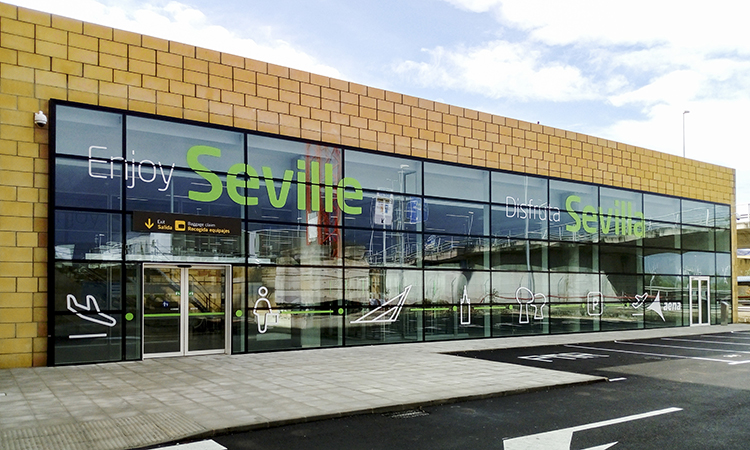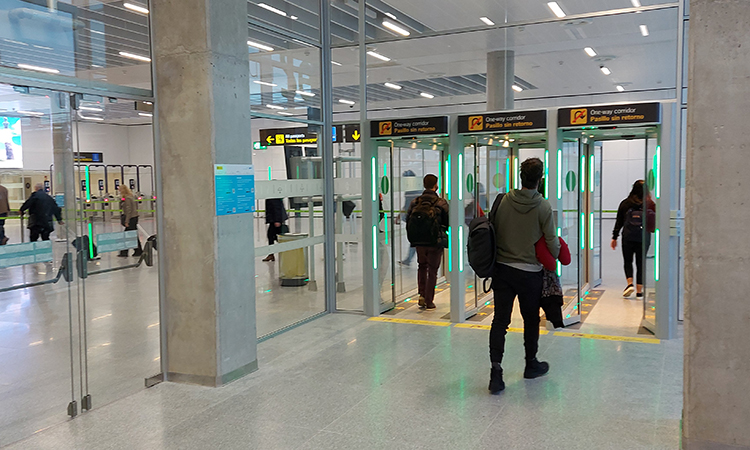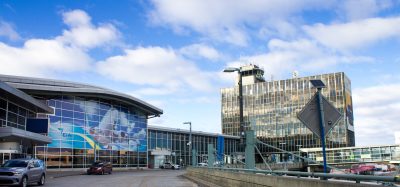Digitalisation, sustainability and resilience: The keys to recovery
- Like
- Digg
- Del
- Tumblr
- VKontakte
- Buffer
- Love This
- Odnoklassniki
- Meneame
- Blogger
- Amazon
- Yahoo Mail
- Gmail
- AOL
- Newsvine
- HackerNews
- Evernote
- MySpace
- Mail.ru
- Viadeo
- Line
- Comments
- Yummly
- SMS
- Viber
- Telegram
- Subscribe
- Skype
- Facebook Messenger
- Kakao
- LiveJournal
- Yammer
- Edgar
- Fintel
- Mix
- Instapaper
- Copy Link
Posted: 28 April 2021 | Jesús Caballero Pinto | No comments yet
For International Airport Review, Jesús Caballero Pinto, Director of Seville Airport, discusses the three elements that will underline the airport’s structure for recovery and echo the technological transformation of the aviation industry.


Credit: Seville Airport
The air transport industry today is facing the biggest crisis in its history. The loss of traffic, down to levels similar to 40 years ago, coupled with enormous uncertainty as to when the recovery will begin are the main determining factors in a scenario where three aspects will be crucial in turning things around: the evolution of the pandemic, the performance of the economy and the public’s confidence to start travelling again.
This situation will lead to a far-reaching (and necessary) transformation of the industry, which will have to put in place more efficient and effective management models. The key to this process will be innovation by fast-tracking the uptake of new technologies which support digitalisation and sustainability. Only with these tools will the airline industry be able to cope with, and successfully prevail over, the enormous disruption caused by COVID-19. Recovery is, in short, about resilience.
Roadmap for recovery
Aena, the Spanish airport manager, has made these three core areas – digitalisation, sustainability and resilience – the foundation of its roadmap for addressing the recovery from the most advantageous starting point.
Digitalisation
Transit through airport facilities will be more agile, and passenger and airline service will be practically made-to-measure. The benefits this will bring in terms of profitability, efficiency and loyalty are beyond doubt”
The digitalisation of airports will make it possible to implement customer-centric management using technology which will optimise work processes while also making it possible to segment services, identify needs and even predict trends or potential problems. Transit through airport facilities will be more agile, and passenger and airline service will be practically made-to-measure. The benefits this will bring in terms of profitability, efficiency and loyalty are beyond doubt.
Aena’s commitment in this area is reflected in its ‘Airport 4.0’ strategy. Augmented reality, biometric access control, virtual or robotic assistants in the terminal building, ‘non-stop’ passage through security screening, automatic or remote-controlled passenger boarding bridges, passenger flow monitoring, autonomous vehicles, virtual control towers, drones to inspect the airfield and continuous interaction with the traveller – even before they leave home – are just some of the fields in which we are working.
Several of these breakthroughs are already in place at our airports, while others are at the testing stage in order to explore their potential and the adjustments which would be needed to tailor them to real operations.


Credit: Seville Airport
Indeed, Seville Airport (SVQ) is hosting a pilot test for the remote control of passenger boarding bridges in partnership with four airlines. This test will be extremely useful in getting the most out of the state-of-the-art bridges which will begin to be fitted at the airport in July 2021. With investment coming to more than €5 million, the features of the new jetways include both remote and automatic control.
We have tested drones for airfield inspection and wildlife control, we are working with handling companies to trial autonomous vehicles and we have begun to experiment with two proposals for hand luggage inspection.
We are also at the development stage of introducing augmented reality in the refurbishment and extension of the terminal building, so that travellers can see what each area they go through will look like. The design of this project, which will bring about the biggest transformation of the Seville aerodrome in 30 years, was drawn up under the concept of what a digitalised airport should be like.
Sustainability
As for sustainability, in 2020, Aena was the first Spanish company, and one of the first in the world, to make a firm commitment to climate change in its bylaws. The company will put it into practice through a Climate Action Plan, with annual progress reports supplied to its shareholders. The three main goals of this document are currently as follows:
- Implement a photovoltaic plan which will enable all airports in the network to be 100 per cent self-sufficient in renewable energy by 2026. More than €350 million will be invested to achieve an output equivalent to the usage of 280,000 households per year
- Fast-track Aena’s carbon neutrality programme and attain the Airports Council International (ACI) Level 3+ (‘Neutrality’) Airport Carbon Accreditation at its main airports by 2026
- Meet the ACI Europe Net Zero commitment by 2040, with net zero emissions at all airports in the network.
Seville Airport is to play a key role in the achievement of all of these challenges. In the case of the photovoltaic plan, for instance, its land will house a large part of the infrastructure which Aena is to roll out to turn the plan into a reality. As part of this initiative, the airport has kicked off talks with other transport infrastructures in the city to harness the surplus energy produced and use it in projects which help towards the decarbonisation of logistics and industrial operations in the area (e.g. hydrogen generation).
On the journey towards the major environmental protection goals, Aena’s airports work in partnership with their stakeholders: from airlines to air traffic service managers, handling companies, aircraft manufacturers and fuel producers”
On the journey towards the major environmental protection goals, Aena’s airports work in partnership with their stakeholders: from airlines to air traffic service managers, handling companies, aircraft manufacturers and fuel producers.
All of this has enabled intermediate steps to be taken. Thus, today, 100 per cent of the energy we ‘buy’ at airports is renewable with a guarantee of origin, and actions have been put in place to step up energy efficiency in lighting and HVAC. Measures have been implemented to optimise airport operations and the management of European airspace with the aim of cutting waiting and flight times (Seville Airport operates as an Advanced Air Traffic Control (ATC) Tower in coordination with EUROCONTROL since 23 March 2021); a network of electric vehicle charging stations is being deployed in car parks for passengers and employees; initiatives have been launched to encourage promoting and using hydrogen; and requirements have been included in contracts with handling agents to replace the equipment that they normally use with less polluting alternatives.
Resilience
Digitalisation and sustainability will be the bridge for the third strand of our recovery strategy: resilience. Armed with these tools, we will shape the day-to-day running of our infrastructures and we will have turned this huge crisis into an opportunity for genuine improvement. So, let us be resilient; let us continue to adapt and prevail. Our industry’s long-awaited recovery is getting closer and closer.
Jesús Caballero Pinto has been the Director of Seville Airport, which is managed by Aena Aeropuertos S.A., since 2013. Prior to this, Pinto was the Director of Melilla Airport from 2009 to 2013. Before this, he had held a range of engineering and managerial positions at various airports and aviation companies.
Related topics
Air traffic control/management (ATC/ATM), Airport crisis management, Airside operations, Augmented reality (AR)/ Virtual reality (VR), Biometrics, COVID-19, Emissions, Machinery, New technologies, Passenger experience and seamless travel, Sustainability, Sustainable development, Terminal operations
Related airports
Related organisations
AENA, Airports Council International Europe (ACI Europe), European Union (EU)


















